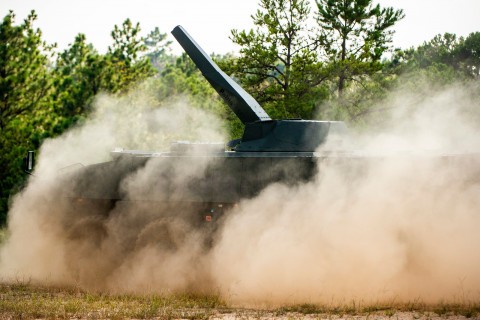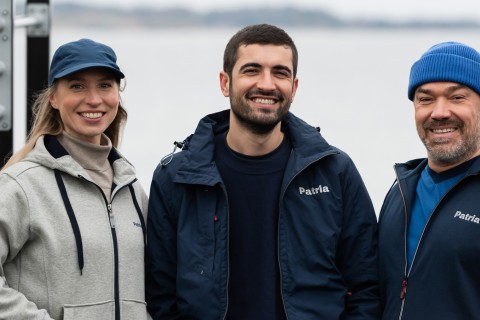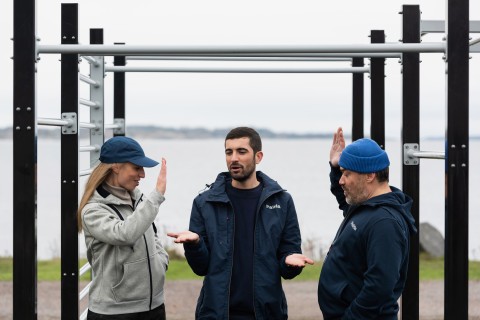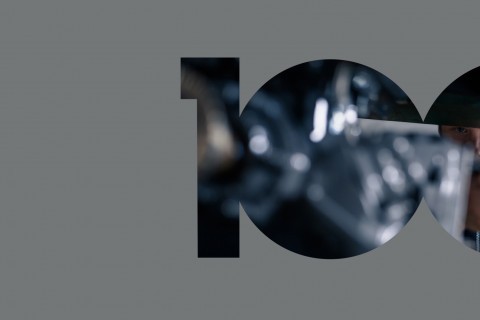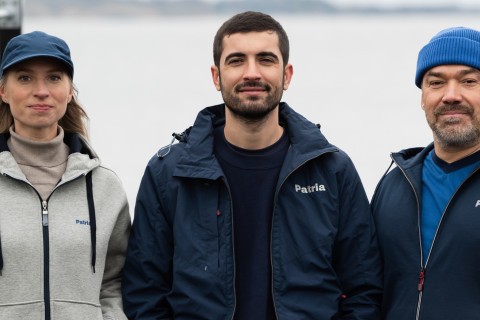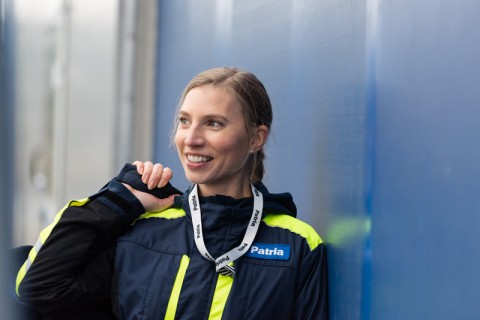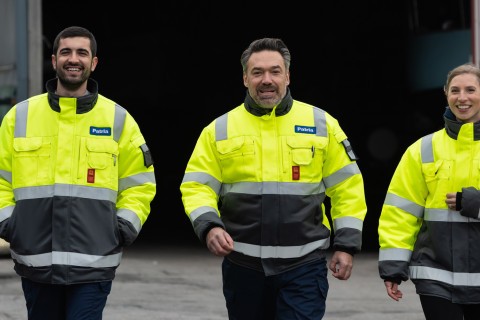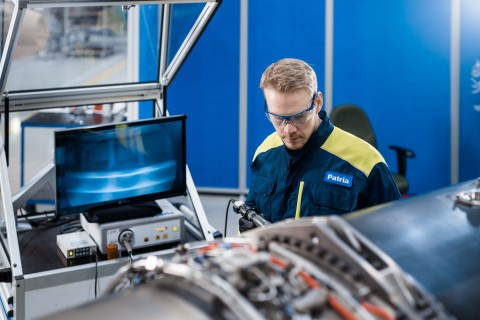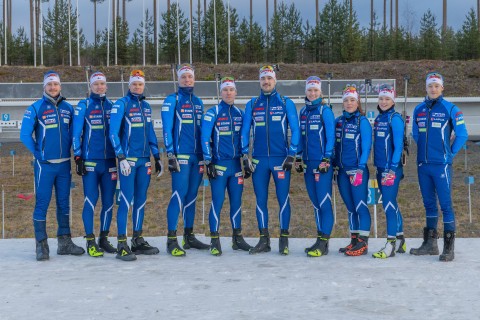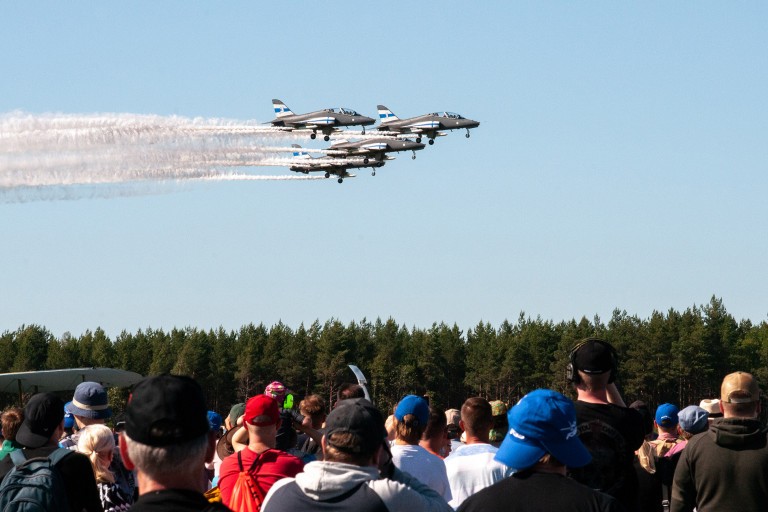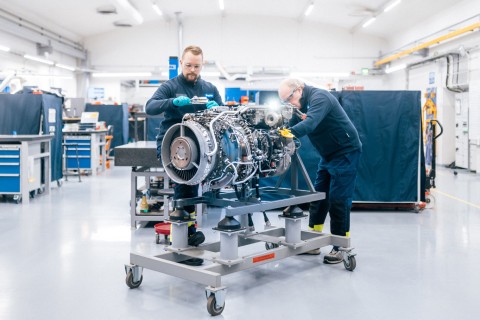
16.6.2017
Patria is a strategic partner of the Finnish Defence Forces in the life cycle support services for the F/A-18 Hornet fighter aircraft. The safety and operational performance of the aircraft is guaranteed by a strong base of Finnish expertise and capability to offer competitive, reliable and cost-efficient solutions that can also be utilized when the next generation of fighters will be taken into use.
Patria is a strategic partner of the Finnish Defence Forces in the life cycle support services for the F/A-18 Hornet fighter aircraft. The safety and operational performance of the aircraft is guaranteed by a strong base of Finnish expertise and capability to offer competitive, reliable and cost-efficient solutions that can also be utilized when the next generation of fighters will be taken into use.
Patria is the leading producer of life cycle support services for aircraft and helicopters in Northern Europe. The company provides these services to, for example, the F/A-18 Hornet fighters of the Finnish Air Force. “With Patria maintaining the aircraft for its part at optimal readiness and mission capability, the Finnish Air Force is free to focus on its core functions”, says Harri Lampinen, head of Patria Aviation’s Aircraft unit. Life cycle support services cover lots of activities. They safeguard the operational readiness of fighters around the clock, every day of the year. On the other hand, they also secure the availability and operational capability of the fleet for the duration of its service life. For Finland’s Hornets, this life span is 30 years. “Thanks to the workshare, the Air Force can concentrate on its own expertise which is flying”, says HX Program Manager Seppo Pietiläinen from the Finnish Air Force.
Partnership holds also in times of crisis
The workshare between Patria and the Finnish Defence Forces is clear. The Air Force is responsible for the use and operational level maintenance of the aircraft. The Finnish Defence Forces Logistics Command is responsible for purchasing the material required by the fleet. Patria, on the other hand, takes care of a significant portion of scheduled maintenance, repairs and upgrades of the aircraft in accordance with the objectives and requirements set by the Finnish Defence Forces. “The Air Force performs a small amount of scheduled maintenance itself to maintain its competencies and capabilities to operate in crisis situation”, says Lieutenant Colonel (Eng.) Harri Korhonen from the Aircraft Branch of the Defence Forces Logistics Command. Strategic partnership with the Defence Forces means that Patria’s services are available in the event of crisis, during which the international partners’ support may not be available. “Patria is a domestic partner whose services are always available. The strategic partnership also entails cost savings. In Finland many activities are done more efficiently than elsewhere”, says Harri Lampinen of Patria.
Efficiency on the production line
The manufacturer of the Hornets, the Boeing Company, and the main user of the type, the US Navy, have participated in the design of the life cycle support services. Valuable expertise has accumulated in Finland over the years, which is vital with regard to security of supply. “Our service also includes the possibility to change the manufacturer’s original specifications if needed. For example, we have fine-tuned the Hornets’ maintenance system to provide the optimal fit with Finnish conditions and the way of use of the aircraft by the Finnish Air Force”, Lampinen says. The life cycle support services are designed so that repairs and upgrades can be performed simultaneously with the scheduled maintenance of the aircraft. The work is performed on the production line of Patria’s Aviation business unit in Halli, Jämsä. “This way the negative impact on the availability of the aircraft is effectively minimized. Furthermore, it is more cost-effective to perform all work at the same time period rather than having each plane brought in multiple times for different procedures”, says Business Development Manager Juha Alanko of Patria Aviation’s Aircraft unit.
More performance from major upgrades
The life cycle support services of the Finnish Hornets have included two major life cycle upgrades performed. The first, Mid-Life Upgrade 1 (MLU 1), was carried out for the entire fleet in 2006–2010. Among other things, the upgrade improved the Hornets’ air to air combat capability by introducing the AIM-9X infrared missile and JHMCS helmet mounted cueing system. Map system was upgraded with tactical moving map capability, communication radios were upgraded and a new identification friend-or-foe interrogator/transponder was installed. The second major upgrade, MLU 2, was carried out on each of the 62 Hornets in 2013–2016. Through the upgrade the aircraft’s performance and its capability to support joint operations between all services were enhanced by implementing the air-to-ground capabilities. To support interoperability Link-16 data link system was installed. Link-16, Litening targeting pod and upgraded cockpit displays improved the pilot situational awareness. Self-protection suite and other smaller updates improved the aircraft survivability. International civil aviation regulations required modifications to Hornets’ navigation and communication systems. The Hornets’ new weapons include guided short-range JDAM bombs, medium-range JSOW glide bombs and long-range JASSM air-to-ground missiles. “The MLU 2 upgrade is significant because the improvement in performance also supports the operations of the Finnish Army and the Navy”, Lieutenant Colonel Korhonen of the Finnish Defence Force Logistics Command points out. According to Lampinen, the MLU 2 upgrade was a challenging task, which also added new technical competence to Patria’s offering. “We also gained a lot of valuable experience of implementing large projects which require integrating of several systems”, he states.
Focus on structural sustainment
MLU2 was the last major upgrade scheduled for the Hornets. In the coming years, the focus will be on the safe and cost-efficient use of the aircraft for the remainder of their service life. The main focus will be on the studies in structural integrity of the airframes and on prevention and repair of possible structural damages. “The fleet is ageing, and we begin to find more fatigue cracks in airframe structures. We need to find solutions securing the fleet service life safely and cost-efficiently”, says Lieutenant Colonel Korhonen. The Finnish Defence Forces define the objectives and requirements for the structural integrity, and Patria carries out the required studies and proposes the implementation alternatives. Mr. Pietiläinen emphasises the fact that the structural integrity management of aircraft requires constant vigilance. The most important thing is to prevent any damage in advance. “There is significant competence of aircraft structures in Finland, which has been complemented through cooperation with other countries flying the F/A-18 Hornets. We have gained a great deal of useful information on how the airframe structures should be strengthened and what modifications are required”, Pietiläinen says.
Domestic maintenance capability is essential
The building up of life cycle support services for Hornets and the know-how required dates back to the acquisition and assembly phase of the Hornet project, carried out at Patria’s production facility in the 1990s. “From the very beginning, we obtained valuable information on the technology and software of the new aircraft”, Alanko says. From the earliest stages of the new fighter project HX, the planning of life cycle support services has also been included. The Hornet capability replacement project HX was launched in 2015. The Finnish Air Force plans to take the new aircraft in use in the second half of the 2020s. Harri Lampinen emphasizes that, thanks to the Hornets, a solid base of systems expertise and maintenance capability has been built in Finland, and the securing and improving of these capabilities is vital for Finland’s continued security of supply. “With the experiences gained from the Hornets, Patria will also be able to take good care of the new fighters”, Lampinen concludes.
What did you like about the article?
Thank you for your opinion! You can share the article on social media using the buttons below:
